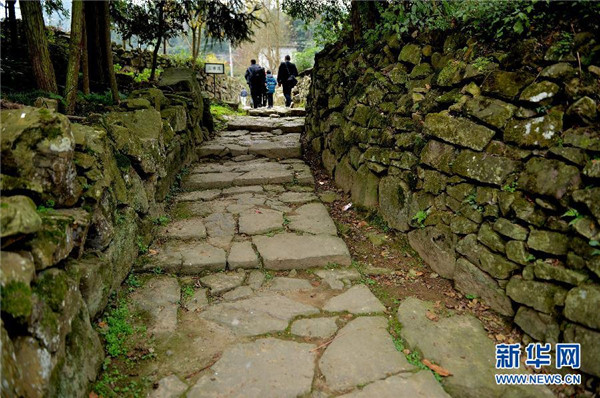 时刻新闻
时刻新闻

The stone archway in Tangya chieftain city relics in Hubei province. [Photo/Xinhua]
China's chieftain heritage sites will be considered by the 39th session of the World Heritage Committee, which opened in Bonn, Germany on June 28, for a listing as world cultural heritage this week.
China officially submitted application to the World Heritage Center for Chinese chieftain heritage in March 2014.
Tusi Chieftain sites include Laosicheng Site in Hunan province, Hailongtun Site in Guizhou province and Tangya Tusi Site in Hubei province.

What is the Native Chieftain System of ancient China?
The Native Chieftain System was a special political system adopted by the ancient Chinese emperors to govern ethnic minority regions. It allowed local tribal leaders to inherit the official positions of the empire.
The system was practiced by the governments of the Yuan (1271-1368), Ming (1368-1644), and Qing (1644-1912) dynasties, but dates as far back as the Five Dynasties period (907-960).
The chieftain, also known as Tusi, was a tribal leader appointed as an imperial official by the central government in ancient China.
Tusi ruled their tribes on the basis of the empire's law and proprieties as well as local customs, contributing to the distinctive Tusi political and cultural tradition.
The Tusi system embodied political wisdom in handling relationships among ethnic groups in ancient China.

What are Tusi sites?
Tusi sites are a unique witness to the Native Chieftain System in ancient China.
Most Tusi sites were built along hillsides, mixing with and taking advantage of local topography by making hills the main defensive elements.
The Tusi sites tactfully integrated government offices, residential quarters, military fortifications and commercial and transportation facilities into fully-functioning cities within limited space in the mountainous area. They are exceptional examples of mountain cities in ancient China.



